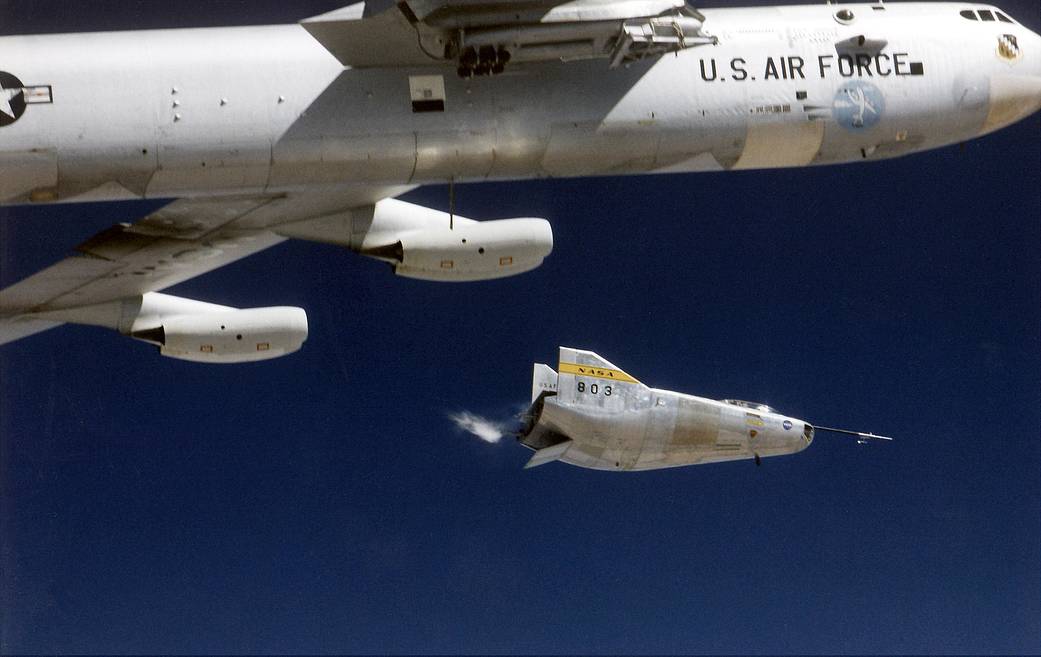NASA pilots said the M2-F2 had lateral control problems that led to the crash, even though it had a stability augmentation control system. When the M2-F2 was rebuilt and redesignated the M2-F3, it was modified with an additional third vertical fin – centered between the tip fins – to improve control characteristics.
The first flight of the M2-F3, with NASA pilot Bill Dana at the controls, occurred on June 2, 1970. It was a glide flight to evaluate changes in the vehicle’s performance due to the modifications. The modified vehicle exhibited much better lateral stability and control characteristics than had the M2-F2.
Over the next 26 missions, the M2-F3 reached a top speed of l,064 mph (Mach 1.6). Dana was the pilot on that high-speed mission, which took place on Dec. 13, 1972. The highest altitude reached by the M2-F3 was 71,500 feet on Dec. 20, 1972, the date of its last flight, with NASA pilot John Manke at the controls.
A reaction jet control system, similar to thrusters used on orbiting spacecraft, was also installed on the M2-F3 to obtain research data about their effectiveness for vehicle control. As the M2-F3’s portion of the lifting body program neared an end, it evaluated a rate command augmentation control system and a side-arm control stick similar to side-arm controllers now used on many modern aircraft…Learn more
The M2-F3 is currently on display at the Smithsonian National Air and Space Museum in Washington, DC.



























